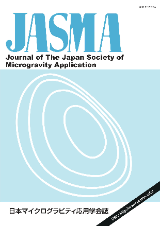28 巻, 4 号
Mid and Long Term Vision of Space Utilization
選択された号の論文の11件中1~11を表示しています
- |<
- <
- 1
- >
- >|
-
2011 年 28 巻 4 号 p. 104-
発行日: 2011/10/31
公開日: 2021/01/21
PDF形式でダウンロード (334K) -
2011 年 28 巻 4 号 p. 105-
発行日: 2011/10/31
公開日: 2021/01/21
PDF形式でダウンロード (610K) -
2011 年 28 巻 4 号 p. 112-
発行日: 2011/10/31
公開日: 2021/01/21
PDF形式でダウンロード (1104K) -
2011 年 28 巻 4 号 p. 119-
発行日: 2011/10/31
公開日: 2021/01/21
PDF形式でダウンロード (600K) -
2011 年 28 巻 4 号 p. 124-
発行日: 2011/10/31
公開日: 2021/01/21
PDF形式でダウンロード (1041K) -
2011 年 28 巻 4 号 p. 131-
発行日: 2011/10/31
公開日: 2021/01/21
PDF形式でダウンロード (557K) -
2011 年 28 巻 4 号 p. 137-
発行日: 2011/10/31
公開日: 2021/01/21
PDF形式でダウンロード (610K) -
2011 年 28 巻 4 号 p. 144-
発行日: 2011/10/31
公開日: 2021/01/21
PDF形式でダウンロード (886K) -
2011 年 28 巻 4 号 p. 150-
発行日: 2011/10/31
公開日: 2021/01/21
PDF形式でダウンロード (610K) -
2011 年 28 巻 4 号 p. 155-
発行日: 2011/10/31
公開日: 2021/01/21
PDF形式でダウンロード (645K) -
2011 年 28 巻 4 号 p. 160-
発行日: 2011/10/31
公開日: 2021/01/21
PDF形式でダウンロード (703K)
- |<
- <
- 1
- >
- >|
